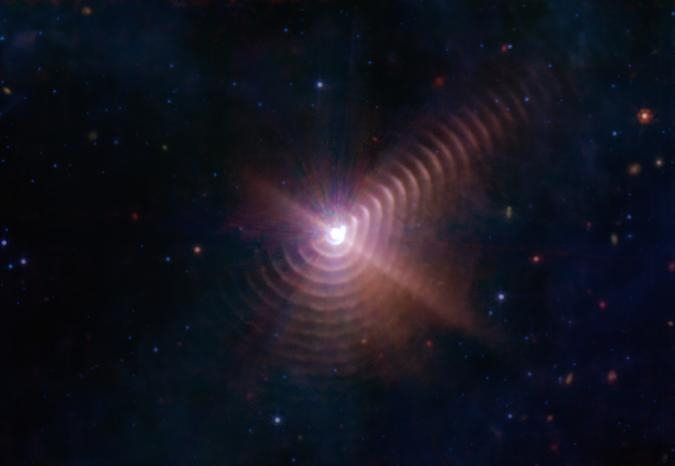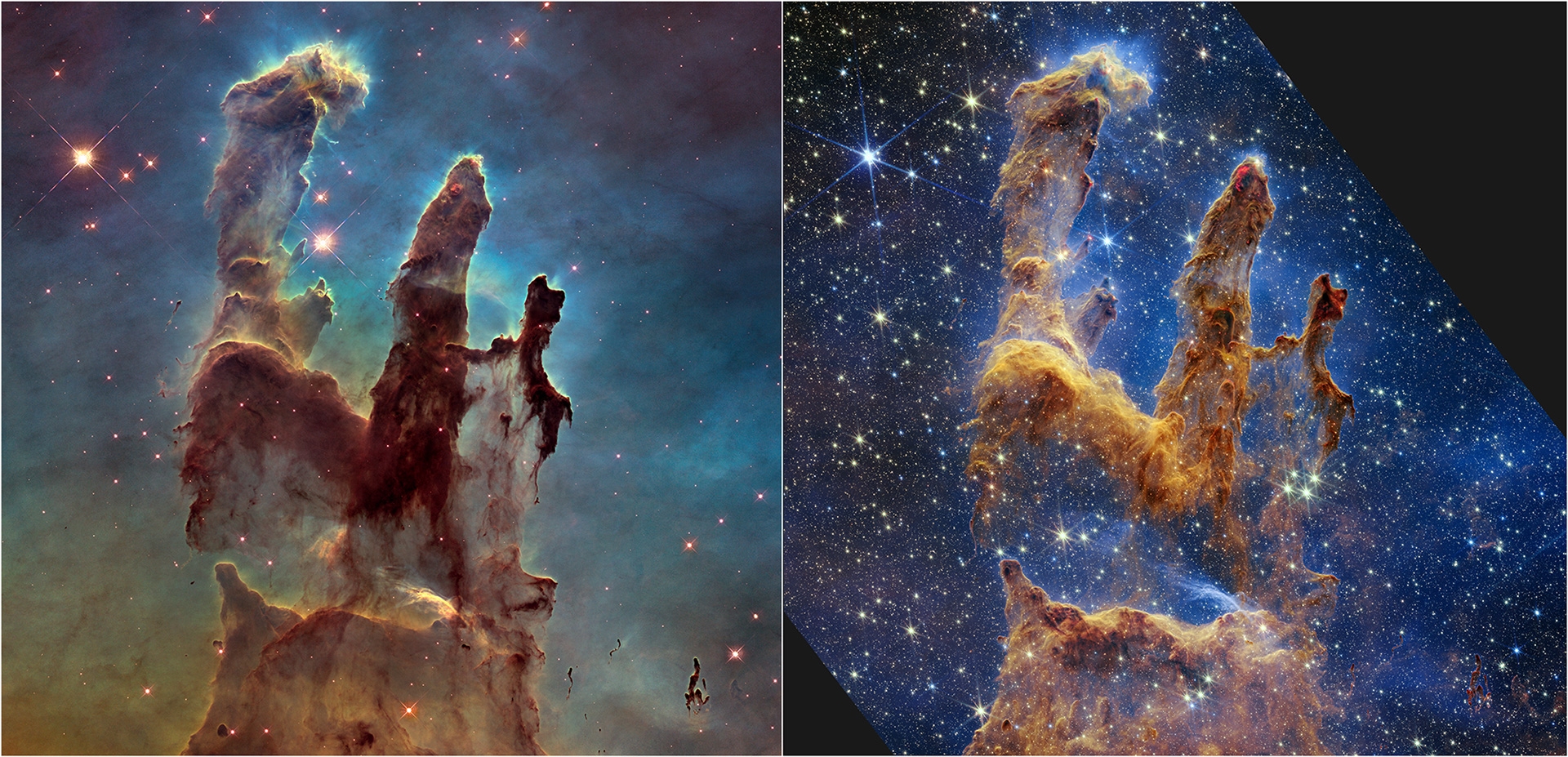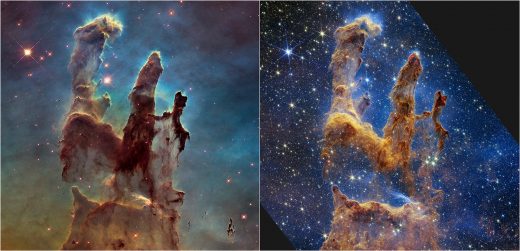James Webb telescope captures Pillars of Creation in unprecedented detail
James Webb Telescope captures unique dust rings surrounding two stars
The rings are a kind of “fingerprint” similar to rings on the inside of a tree trunk.


The James Webb Telescope has captured an unusual dust pattern around two stars that can track the passage of time similar to ring patterns on the inside of tree trunks. The image, detailed by the European Space Agency and NASA’s Jet Propulsion Laboratory, shows a pattern of 17 concentric rings made up of dust particles surrounding two stars known as Wolf-Rayet 140.
According to JPL, Wolf-Rayet stars are thought to be rare in our galaxy, and only 600 have been discovered so far. And Wolf-Rayet 140 is the only such system that’s been found to have this type of ring pattern, due to the peculiar shape of its orbit, which is “elongated” rather than circular. The rings some from a reaction that occurs when the two stars come close together, once every eight years, forming a kind of “fingerprint” around the stars.
“Each ring was created when the two stars came close together and their stellar winds (streams of gas they blow into space) met, compressing the gas and forming dust,” the European Space Agency explains. “The stars’ orbits bring them together about once every eight years; like the rings of a tree’s trunk, the dust loops mark the passage of time.”
The image also demonstrates the level of detail possible with James Webb’s instruments. Prior to this capture, scientists using ground-based telescopes could only see two dust rings around Wolf-Rayet 140.
You can read more about the discovery in Nature.

(36)


